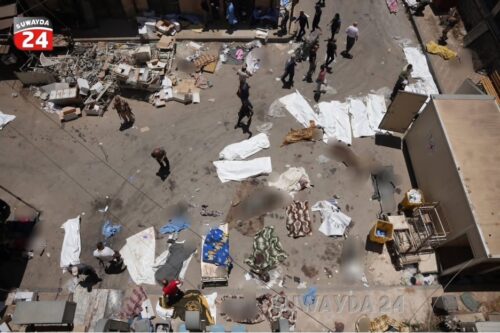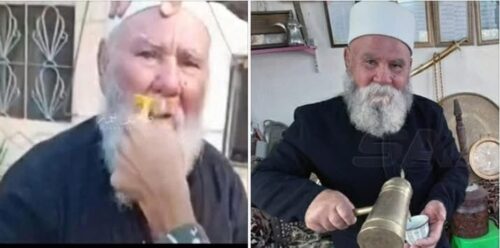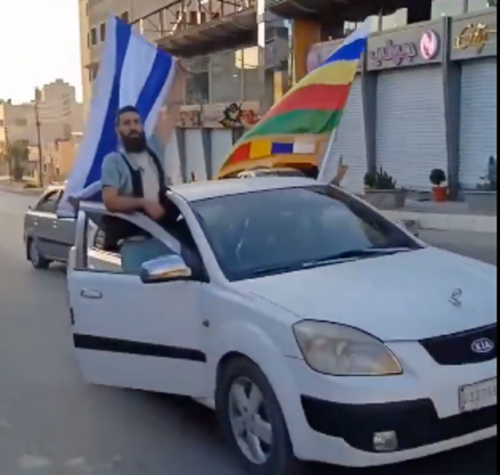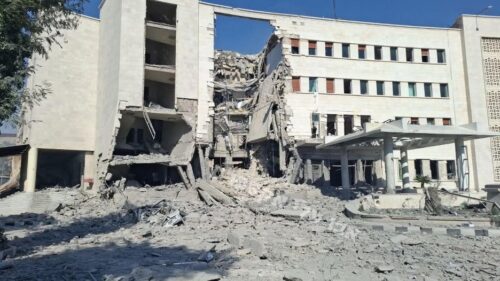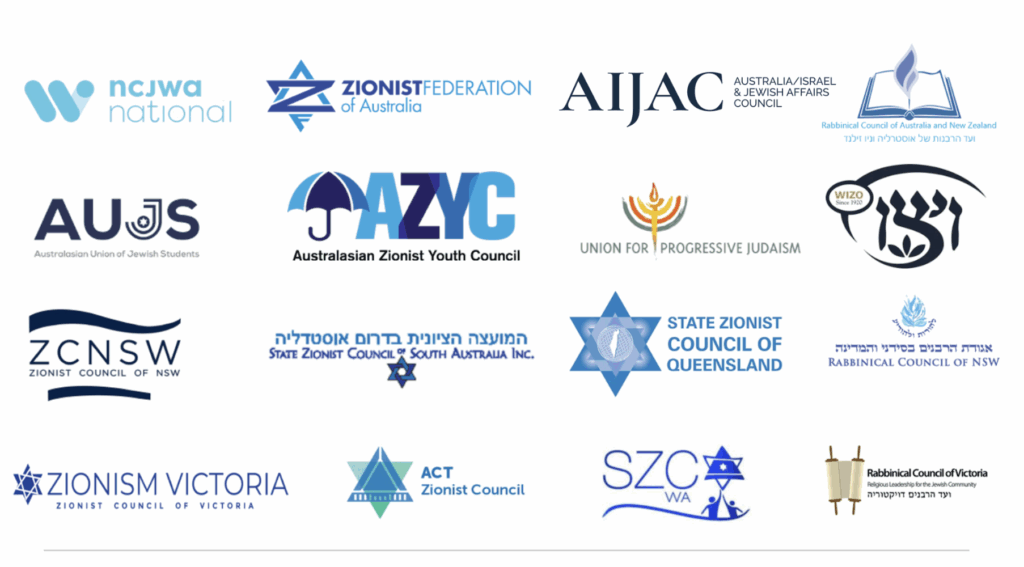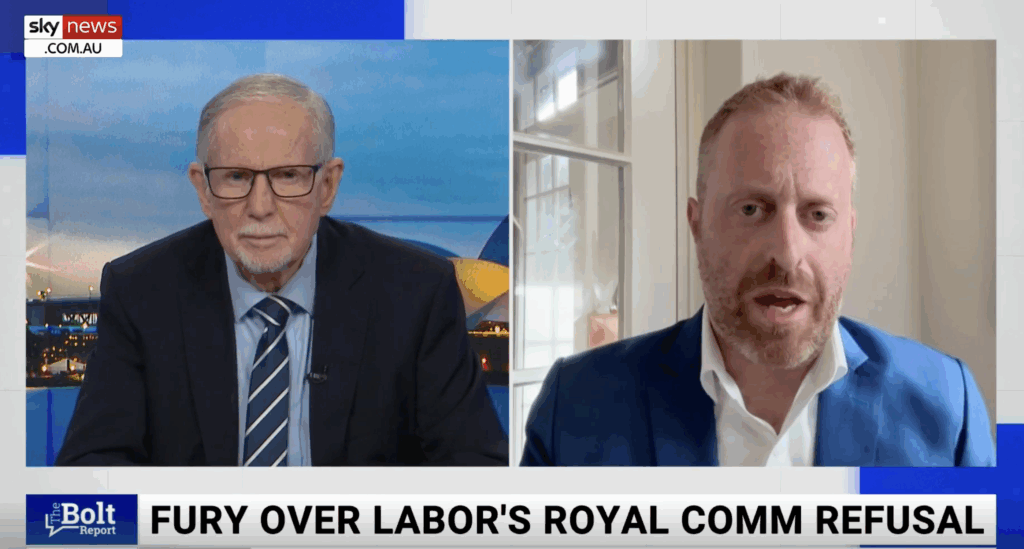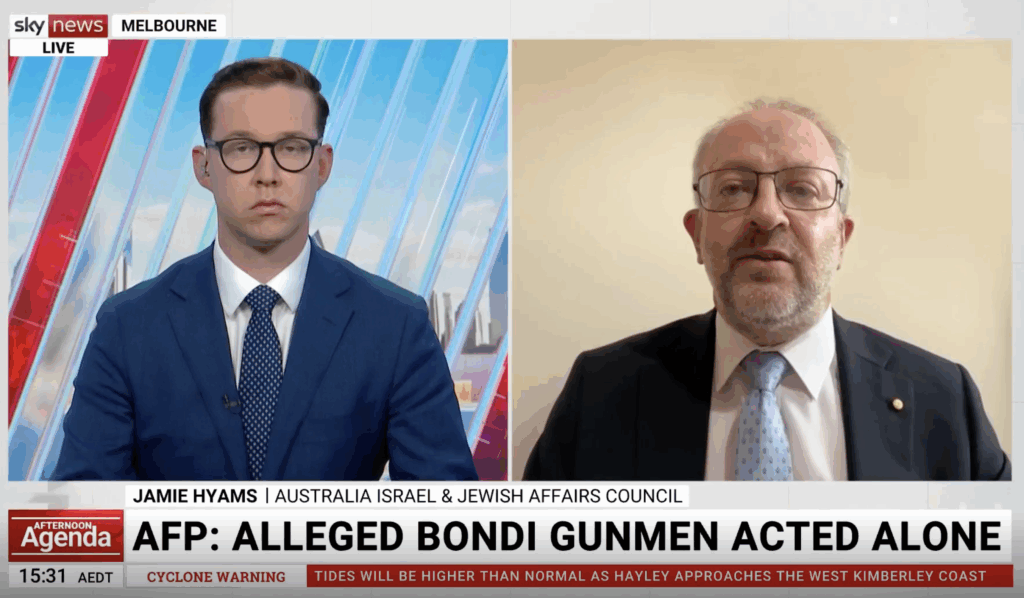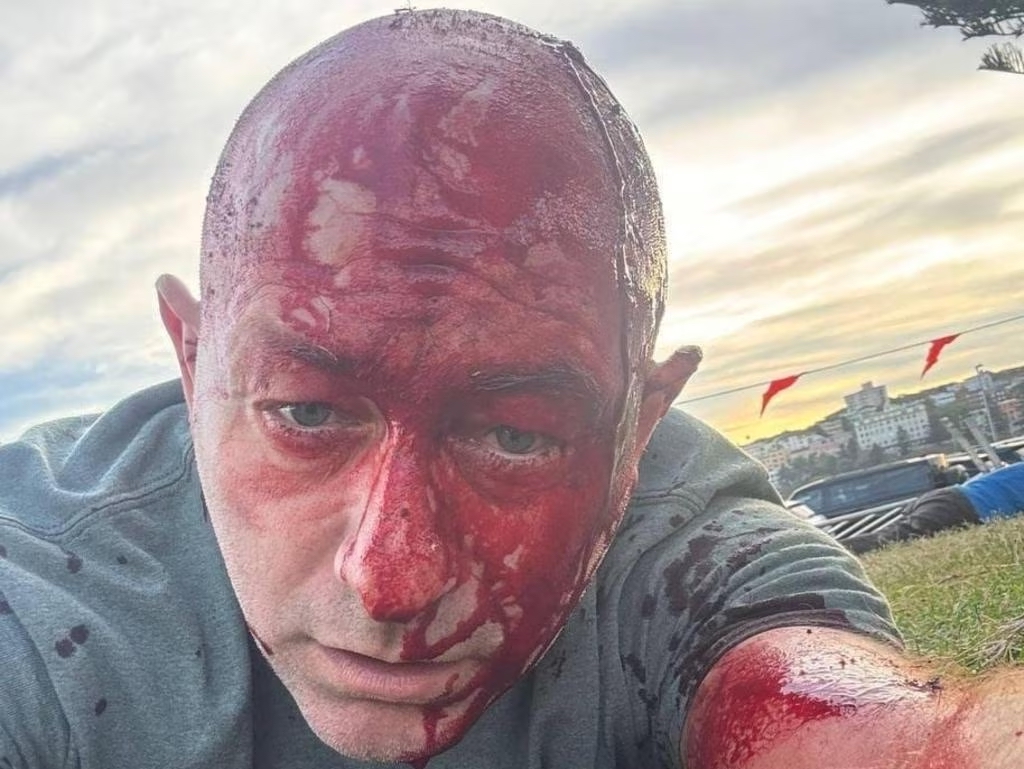FACT SHEETS
Fast Facts: Violence in Syria, and Israel’s intervention
July 23, 2025 | AIJAC staff

‘Fast Facts’ are snapshots of rapidly evolving situations. This specific page will not be updated, but we are monitoring developments and will issue a new fact sheet if doing so is useful.
Key points
- Bedouin–Druze inter-communal violence escalated in the southern Syrian province of Suweida on July 12
- Syrian government forces intervened and participated in massacres of Druze civilians
- Israel attacked Syrian forces in a bid to protect the Syrian Druze community
- After a week of violence, in which about 1,100 people were killed, a ceasefire facilitated by the US appears to be holding
Contents
Summary
After a Druze individual was attacked en route to Damascus on July 12, violence erupted in and around the predominantly Druze city of Suweida, in southern Syria. What started as tit-for-tat kidnapping and violence between Druze and Bedouins became mass violence, with Syrian Government and Bedouin forces from across the country involved in massacres. The violence also brought about an Israeli intervention in defence of the Druze. By July 20, a ceasefire seemed to be holding, though approximately 1,100 people were reportedly killed during the week, including almost 200 who were killed in ‘field executions’.
Context
Even before the collapse of the Assad regime in December 2024, Israel had a policy of protecting the Druze minority in Syria, most of whom are concentrated in the southern province of Suweida. The Druze comprise about 90% of the province’s population of 375,000, as of 2010. At least 250,000 Druze lived in Damascus and its outskirts, with an additional 30,000 around Mount Hermon and 25,000 across 14 villages in Jabal al-Summaq. There are no reliable estimates about Syrian demographics, nationally or regionally, since the civil war began in 2011.
When the civil war began, the Druze established an uneasy strategic alliance with the regime, enabling them to defend themselves from Sunni jihadis like Jabhat al-Nusra and its allies, which kidnapped, massacred and forcibly converted Druze during multiple assaults.
While Druze see their religion as pre-dating Islam, scholars suggest they are an 11th century-offshoot of Ismaili Shiism and, like other such minority ethno-religious groups – and even the Shia themselves – are a target of Sunni jihadists.
Jubhat al-Nusra, at the time an al-Qaeda affiliate, was the first iteration of Hayat Tahrir al-Sham (HTS), the group led by Ahmed al-Shara’a that is, for all intents and purposes, the new Syrian regime. It is no surprise, therefore, that the Druze community has been distrustful of the new regime, and pushed for the decentralisation and federalisation of Syria whilst refusing to disarm Druze militias. In late May, armed men in Suweida took the regime-appointed governor hostage.
Fear of the new regime was exacerbated by the March 2025 sectarian massacre of about 1,500 Alawis across the country by al-Shara’a’s men and other factions nominally under the control of the regime, as well as Sunni civilians, following a series of coordinated attacks allegedly by former Assad regime elements against the new security. Al-Shara’a was either unable or unwilling to prevent the bloodletting, and, to date, nobody has been punished.
That said, Druze are traditionally loyal to the country in which they are citizens, and the Syrian Druze community has seen debates over how to engage the new regime and the future for the Druze areas. It is likely that competing personal ambitions, opportunism and control of smuggling routes play a role alongside genuine existential fears.
In March 2025, clashes in the Druze areas of Damascus saw Israeli Defence Minister Israel Katz declaring,
We will not allow the extreme Islamic regime in Syria to harm the Druze. If the regime harms the Druze, it will be struck by us. We are committed to our Druze brothers in Israel to do everything to prevent harm to their Druze brothers in Syria, and we will take all the steps required to maintain their safety.
Israeli Prime Minister Binyamin Netanyahu also said in early March, “We demand full demilitarisation of southern Syria from troops of the new Syrian regime in the Quneitra, Daraa and Suweida provinces,” further asserting that no attacks on the Druze would be tolerated.
Suweida has been a relatively lawless, crime-ridden territory, partially due to an arrangement between al-Shara’a and Druze notables not to allow regime security forces in. It was this lack of law and order that ultimately sparked the tit-for-tat kidnappings and then communal clashes between Bedouins and Druze that have dominated the last week, and which are the primary subject of this fact sheet.
The recent violence
On Saturday July 12, a Druze merchant was travelling to Damascus from Suweida city. He was attacked by Bedouins. Some reports indicate he was robbed, others that he was abducted.
Druze militias retaliated by kidnapping several Bedouin. The Bedouins, in turn, attacked the Druze to free their hostages. Such reciprocal violence has been a hallmark of the region for some time. The attack on the Druze merchant that sparked this violence was not, in and of itself, out of character. However, this exchange of violence escalated more than usual.
The Syrian Government tried to calm the situation by declaring a curfew from noon on July 13 and holding negotiations between the parties in order to achieve an exchange of hostages.
On July 14, it deployed Internal Security Forces (ISF) to the area in order to separate the fighting parties.
It is unclear whether these ISF fighters began attacking Druze targets on their own accord, or whether they were met with Druze fire when approaching Suweida city.
However, some of the ISF fighters joined forces with the Bedouins and carried out attacks, including atrocities, against the Druze.
The ISF fighters reportedly included 450 foreign fighters. The Syrian government does not have control over all of Syria, or over all armed groups nominally under Syrian government authority. Bedouins were also mobilised and joined from across the country.
The atrocities carried out by ISF and Bedouin fighters against the Druze allegedly include rape and abduction of women and girls, executing civilians, indiscriminate firing of small arms, mortars and rockets, looting and shaving the moustaches of Druze men in order to humiliate them. Christians in the city were also murdered, and churches desecrated.
Druze civilians in Suweida were trapped in their homes without water or electricity, with several cases of snipers shooting those who stepped outside.
Druze militias and Syrian forces fought for control of the city, with at least half of it falling to Syrian forces at one point.
The fighting continued on July 15. Suweida Hospital was attacked by ‘armed elements’, allegedly including sniper fire that killed two doctors. Because the morgue was filled to capacity, bodies were stacked up in hospital hallways. They were still there on July 20. The hospital had been without water or electricity during the week. The road to the hospital was also inaccessible during the worst fighting, as those travelling on it were attacked.
The ISF fighters pulled out of Suweida city on Thursday after Israeli strikes (see below), but returned the following day with Israeli and Druze permission.
Upon their return, the ISF fighters separated Bedouin and Druze fighters, coordinated the withdrawal of Bedouin fighters from the city, and established checkpoints to keep them out.
They also facilitated the entry into the city of humanitarian aid.
In statements, the Syrian Government took the side of the Bedouins. In a televised address, al-Shara’a said the conflict was between “lawless groups on one side and Bedouin communities on the other, leading to an unprecedented deterioration of the situation.”
The Syrian Interior Ministry spokesperson, Noureddine al-Baba, said, “The Internal Security [Forces], in accordance with the instructions of the Presidency of the Republic and the agreement that was signed, is deployed within the Suweida Governorate in order to supervise the withdrawal of all the clans [i.e. Bedouins], whom we thank for their heroic response in confronting the outlawed gangs and in securing the kidnapped and detained civilians within the Suweida Governorate.”
The Syrian Observatory for Human Rights provided this breakdown of casualties:
- 194 people, including 28 women and eight children, executed by gunmen affiliated with the Ministries of Defence and Interior
- 531 others from Suweida province, including 104 civilians
- 3 Bedouins (including a woman and a child) executed by Druze fighters
- 373 from Syrian government forces (including a Lebanese national and 18 Bedouins)
- 15 Defence and Interior Ministry officials killed in Israeli air strikes
- 3 defence officials killed in the Israeli strike on the Ministry of Defence building
Israel’s involvement
On July 14, Israel began targeting Syrian ISF fighters, including tanks, rocket launchers, combat equipment and pickups armed with heavy machine guns that were approaching Suweida city.
Israel’s stated objective, since shortly after the fall of the Assad regime in December last year, is to protect the Druze from attack, and prevent regime troops in Syria’s south, near Israel’s border. This objective is couched in terms of insisting that areas south of Damascus remain demilitarised.
Israel acted, in part, because of a call for it to intervene from both an Israeli Druze leader, Sheikh Muwafaq Tarif and Sheikh Hikmat al-Hijri, one of Suweida’s Druze leaders.
Netanyahu and Katz released a statement on July 15:
Israel is committed to preventing harm being inflicted on the Druze in Syria, owing to the deep covenant of blood with our Druze citizens in Israel and their historical and familial link to the Druze in Syria. We are acting to prevent the Syrian regime from harming them, and to ensure the demilitarization of the region adjacent to our border with Syria.
Reports indicate that the Trump Administration was unhappy with the Israeli intervention, and obtained an agreement from Israel to stop firing.
However, the next day, as Syrian forces continued to attack the Druze, Israel attacked the entrance to the Ministry of Defence building in Damascus, killing three, and another site close to the presidential palace.
Syrian forces announced their intention to withdraw the same day.
In an unrelated development, about 1,000 Golani Druze entered Syria through the border fence on July 15, with several dozen Syrian Druze entering Israel. Most border crossings were to visit family long separated, though it is suspected that ‘several dozen’ Israeli Druze wanted to fight in Syria.
Timeline
Saturday July 12
- A Druze merchant is attacked on the Damascus–Suweida highway by Bedouin gunmen
- This sparks Druze attacks against Bedouins, and Bedouin attacks against Druze, in escalating revenge attacks, aimed at restoring honour, deterrence and captured civilians
Sunday July 13
- A curfew is declared by the Government
Monday July 14
- Government forces are sent to Suweida to separate the fighters and arrange an exchange of hostages
- However, mass atrocities commence against Druze fighters and civilians, at least some carried out by government fighters
- Israel begins attacking government forces
Tuesday July 15
- The violence continues. The Suweida hospital is attacked
- The US reportedly asks Israel to stop attacking Syrian targets, and Israel reportedly agrees
Wednesday July 16
- Israeli strikes the Ministry of Defence and near the presidential palace
- Syrian Government announces a ceasefire and withdrawal of its fighters
Thursday July 17
- The ‘uneasy calm’ is broken by Druze revenge attacks against Bedouins
- An Israeli drone attacks gathered Bedouin fighters
- There are reports of looting by government forces south of Suweida
Friday July 18
- Likely under US pressure, Israel agrees to allow Syrian government forces to head south for 48 hours
- The situation is mostly calm
Saturday July 19
- The US announces an Israeli–Syrian ceasefire
- Hours later, al-Shara’a announces a ceasefire between the Druze and Bedouins
- Fighting continues for several hours
- Bedouin fighters withdraw from Suweida
- Syrian government fighters create checkpoints, preventing Bedouin fighters from re-entering
Sunday July 20
- Calm mostly prevails since the early hours of Sunday morning
Tags: Ahmed al-Sharaa, Druze, Syria

